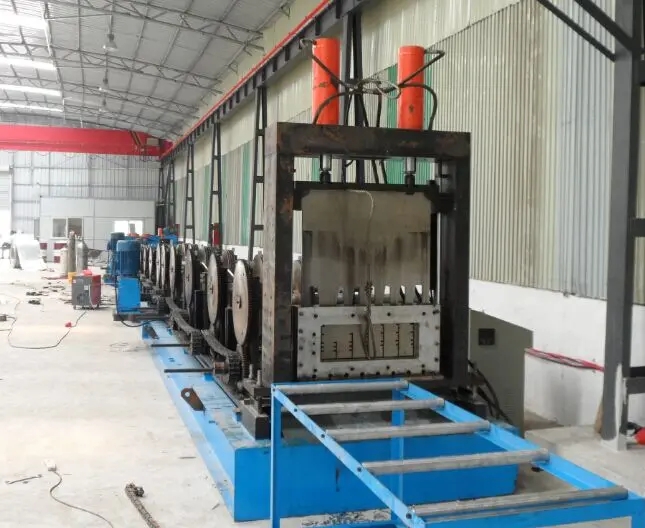
The Evolution and Importance of C Z Forming Machines in Modern Manufacturing
In the ever-evolving landscape of manufacturing technology, C Z forming machines have emerged as a pivotal innovation, transforming the way components are created for various applications. These machines, designed to produce C and Z sections from steel sheets, play a crucial role in the production of structural frame components, including purlins, girts, and other essential elements used in construction, roofing, and manufacturing industries. Understanding the functionality, advantages, and applications of C Z forming machines provides insight into their significance in contemporary manufacturing.
Functionality of C Z Forming Machines
C Z forming machines operate through a streamlined process of roll forming, where flat steel sheets are fed into the machine and progressively shaped into C or Z profiles. This involves a series of rollers that gradually bend the metal into the desired shape. This method is preferred for its efficiency and ability to produce consistent profiles at high speeds.
The shaping process begins with a coil of steel, which is uncoiled and shaped through a series of rollers. The process can be adjusted to produce various thicknesses and widths, allowing manufacturers to customize components to fit specific project requirements. Finally, the formed sections can be cut to length, streamlined, and handled for further assembly or shipping.
Advantages of C Z Forming Machines
There are numerous advantages associated with the use of C Z forming machines, making them an essential investment for manufacturers
1. Efficiency The automated processes of C Z forming machines significantly reduce production time compared to traditional methods. High-speed operations allow manufacturers to produce greater quantities in a shorter timeframe, which is crucial in meeting market demands.
2. Precision and Consistency Tolerance levels achieved by C Z forming machines are remarkable. Each component is produced with high accuracy, ensuring that dimensions and specifications are consistently met, which is vital in structural applications where integrity is paramount.

3. Material Savings Roll forming minimizes waste material, as the process is designed to use raw materials efficiently. By optimizing the layout of the sections and controlling the thickness, manufacturers can save on raw material costs significantly.
4. Versatility C Z forming machines can be adapted for various materials, including aluminum and other metals, allowing manufacturers to cater to a diverse range of projects. This flexibility makes them an invaluable tool in a wide array of industries.
5. Automation and Integration Many modern C Z forming machines come with advanced features such as automation, computer numerical control (CNC), and integration with other manufacturing processes. This not only enhances production rates but also allows for real-time adjustments to meet specific requirements.
Applications of C Z Forming Machines
The applications of C Z forming machines are extensive. In the construction industry, C and Z purlins are vital for supporting roofs and walls in buildings, ensuring structural integrity while minimizing weight. These components are commonly used in commercial, industrial, and agricultural structures, making them versatile across different sectors.
Additionally, C Z forming machines are utilized in the manufacturing of racking systems, frames for equipment, and even in the automotive industry for various structural elements. Their adaptability and efficiency make them an integral part of many production lines, facilitating innovation and growth in manufacturing processes.
Conclusion
As industries continue to advance, C Z forming machines hold a prominent place in the future of manufacturing technology. Their ability to deliver efficiency, precision, and versatility makes them critical in meeting the growing demands of modern construction and manufacturing applications. Investing in C Z forming machines not only enhances production capabilities but also ensures that companies remain competitive in a rapidly changing market. The evolution of these machines symbolizes a shift towards more efficient, sustainable, and innovative manufacturing methodologies, paving the way for future developments in various industries.